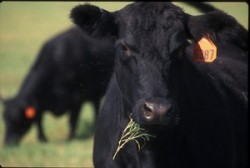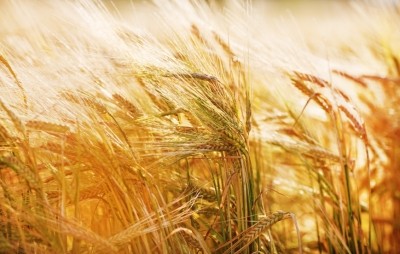Special Edition: livestock production and feed consumption trends
Prices drop as low feed costs prompt herd growth, long feedlot stays

The expectation is that beef production will increase for 2015 and 2016, said US Department of Agriculture officials in the October World Agricultural Supply and Demand Estimates (WASDE) report.
“The forecast for 2016 is raised as cattle slaughter and carcass weights in the first half are projected higher than last month,” officials said.
Beef imports are forecast to stay the same, which is at a larger amount than 2014, and export expectations have dropped as demand has is still weak, they said.
“Cattle prices for 2015 and 2016 are reduced from last month on current large supplies of market ready cattle, weaker demand and competition from relatively large supplies of competing meats,” they added.
Details on domestic trends
This fall had seen a price drop, said Stan Bevers, extension service economist with Texas A&M. Some of the lower prices came from feedlots starting to hold cattle longer than in the past.
Packers dropped slaughter prices on the larger animals, which affects the feeders and eventually lowers the calf prices, he told FeedNavigator.
“As we hold cattle in the feed lot those cattle keep getting bigger,” he said. Some fed cattle weights are reaching 1,600 and 1,700 pounds, he added.
There are several factors that can cause feed yards to start holding cattle longer, he said. These include the fact that the sale of the calf will come at a loss and that the low price of feed makes it easier to feed longer.
“It’s still carried on the books as a purchase plus feed [cost] until you sell it,” he said. However, in the last two weeks there has been a slight upturn in the cattle price as feed lots start to work through the supply of larger cattle, he said.
“We usually bottom out in August or September, but that didn’t happen until the last few weeks,” Bevers said. “Hopefully [it will last] through the end of the year – this is a time when calf prices and cattle prices tend to increase from a seasonality standpoint.”
But he expects 2016 may be the start of lower prices for several years as ranchers are building herds and so there will be larger numbers of animals in the feed yards and calf markets.
Iowa is seeing similar trends come through, said Lee Schulz, assistant professor of economics at Iowa State University. “In Iowa and Minnesota weights have drastically increased from mid-year and it helps explain the large cattle purge, that’s something the market is working through currently,” he added.
The state also is starting to see increases of cattle “on feed,” he said. The national numbers are up 3% and Iowa’s are up 7%, he added. And, August placements are up 11%.
“That does speak to the competitiveness of the Iowa feed lot,” he said.
However, 2014 may have been the apex for cow/calf returns, he said. Returns over cash cost in 2015 are around $400, and in 2016 are expected to drop to a $300 range, both of which remain higher than $100-$200 range seen historically.
“That’s reflective of the tight supplies that the industry has gotten into and the levels needed to trigger industry wide expansion,” he said. He added that the high calf and feeder prices have been a pressure for feedlots.
Import/export market
In the international market there has been a large jump in imports for the US, said Alex Melton, economist with the economic research service at the USDA. An extended drought in Australia has led to increased slaughter there as many animals are raised on pasture.
Import numbers are expected to slow however as Australia limits its export amounts to the US, Melton said.
US exports, however, have been down, he said. This has been prompted by the strength of the dollar and lower levels of domestic slaughter.
Currently, the export market to Japan is slowly rebuilding, he said, and that market is one to watch in the future. “Mexico is an important area to look at for beef and cattle imports and exports,” he added.
Cattle exports to Mexico for the period from January to August 2015 were 12,555 head, down from 19,611 head during the same time in 2014, said the USDA in a meat and livestock annual cumulative year-to-date trade report. Imports of cattle from Mexico during the same time period have gone up from about 664,000 head in 2014 to 773,000 in 2015.
Both imports and exports of cattle by head from Canada however are slightly down, said the USDA report for the January to August period from 2014 to 2015.
However, the current levels of both cattle imports and exports to Canada are continuing to follow the typical fluctuations of a long-term trend, Melton said.
Longer term changes
Central US states, like Iowa, are starting to see a larger increase in herd sizes compared to the growing herds in other parts of the country, said Schulz.
“If you look at the Corn Belt region, we represent about 15% of the national herd, and that increased about 3% year-over-year,” he said. “We’ve had increased stocking rate abilities and faster recovery from drought.”
Some of the national herd is moving north, he said.
“A lot of the corn production is here in Iowa,” he said. “The availability of the distiller grains has made us very competitive in cattle finishing.”
However, there is some competition for grazing land, Schulz said. But, moderation of the grain prices has meant that the cost of land to use as pasture has started to come down.
One trend that not everyone in the industry wants to see continue is the increase of slaughter weights.
“I think we’ll continue that trend, but it may slow down some and hopefully feed lots will learn their lesson, that cattle get fat if you feed them enough,” said Bevers. “You can’t hold them that long.”
He added that the industry may be getting to the limit of the weight it can put on an animal.












